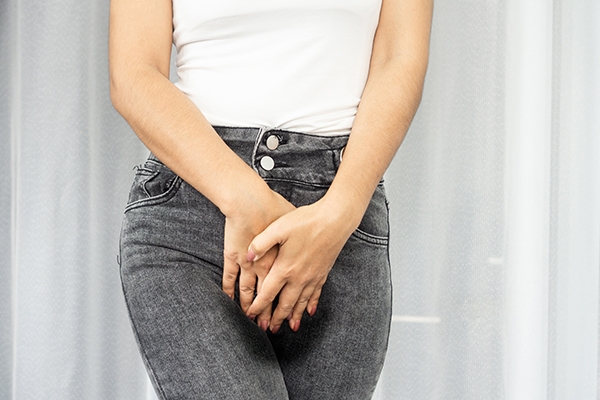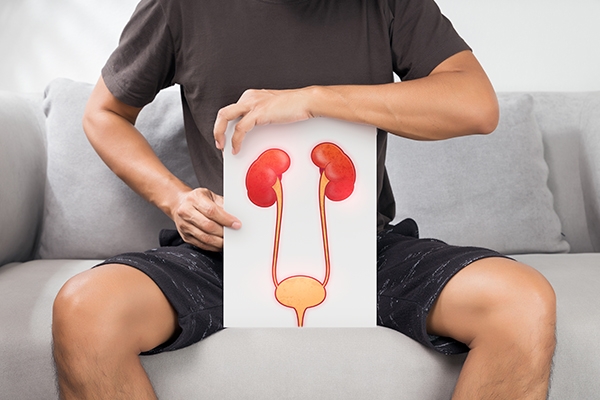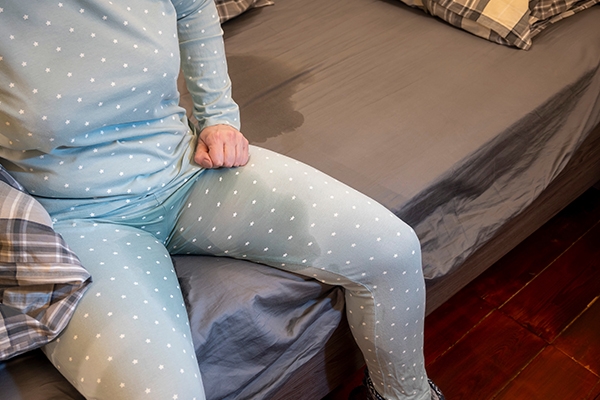Urinary Incontinence: Treat It Before It Gets Worse!

Have you ever suddenly felt a leak when coughing or sneezing? Don't worry, you're not alone! This condition is common, but the good news is—there are effective treatment options. Let's find out how to recover control through right diagnosis and treatment!
Understanding urinary incontinence

The International Continence Society (ICS) defines urinary incontinence as the involuntary or unintentional leakage of urine. In other words, it is called urine leaking.
Urinary incontinence is a type of lower urinary tract disorder that can result from a variety causes.
It can affect both men and women, but women are more likely to have it.
Other risk factors that can increase the likelihood of urinary incontinence include pregnancy, vaginal delivery, menopause, obesity, family history, age, diabetes, and obesity.
Urinary incontinence and its causes
1. Stress incontinence
Involuntary leakage of urine due to increased intra-abdominal pressure during
activities like coughing, straining, sneezing, or laughing. The cause is
weakness or injury to the pelvic floor muscles and urethral sphincter.
This condition is most common in elderly women, those who have given birth, and those who have reached menopause.
2. Urgency incontinence
A sudden and strong urge to urinate, which is followed by urine leakage.
This
is caused by overactivity of the bladder's detrusor muscle, which can occur due
to several conditions such as stroke, Parkinson's disease, and multiple
sclerosis. Characterized by frequent urinating during the day or night.
3. Overflow incontinence
The bladder cannot be completely emptied, leading to frequent urination or
continuous leakage. It is caused by weakened detrusor muscle contractions or
urinary system obstructions, causing the bladder fullness.
Common causes
include abdominal or pelvic masses, urethral stricture or nerve disorders such
as spinal cord injuries, multiple sclerosis, and diabetes. Men with enlarged prostate
are particularly at risk.
4. Total incontinence
This condition occurs when the bladder cannot retain any urine, causing
continuous leakage. It often results from structural abnormalities in the
urinary tract or severe neurological disorders.
5. Mixed incontinence
A condition characterized by involuntary urine leaking, as well as stress and
urge incontinence.
Symptoms

- Leaking urine during everyday activities, such as lifting, bending, or exercising.
- Difficulty holding urine after a sudden and strong urge to urinate.
- Leaking urine without any warning or urge to urinate.
- Inability to reach the toilet on time.
- Bedwetting.
- Leaking urine during sexual activity.
- Difficulty emptying the bladder, such as straining, a weak urine stream, feeling incomplete, or the sensation that the bladder is still full, is prevalent in overflow urinary incontinence.
How to treat urinary incontinence
If you have urinary incontinence, the following steps can help manage and reduce your symptoms and improve bladder control:
1. Maintain the ideal body weight
Excess weight increases pressure on the bladder, so losing weight can help reduce urine leakage.
2. Set a drinking schedule
- Stay hydrated, but limit fluid intake after 6 p.m. to reduce nighttime urination.
- Avoid drinking too much or too little, as it can worsen symptoms.
3. Avoid bladder irritants
Avoid caffeine, alcohol, and acidic foods like citrus fruits, as they can worsen symptoms.
4. Maintain a regular urination schedule
- Try to urinate every two to three hours.
- Delaying urinating for too long might weaken the bladder muscles and raise the risk of urinary tract infections.
5. Strengthen pelvic floor muscles
These exercises help strengthen the muscles that control the bladder. Kegel exercises are one of the most effective, as they involve regularly holding and releasing the contraction of the pelvic floor muscles.
How to do Kegel exercises:
- Tighten your pelvic muscles as if you were holding back urine.
- Hold for 3-5 seconds, then relax for 3-5 seconds.
- Repeat 10-15 times, three times a day.
6. Overcoming constipation
Hard stools can increase pressure on the bladder. To lower this risk, eat fiber-rich foods, drink plenty of water, and have a regular bowel movement.
**
Urinary incontinence can indeed interfere with daily activities, but it can be managed with right treatment and habits. If symptoms persist or worsen, consult a doctor for further treatment.



